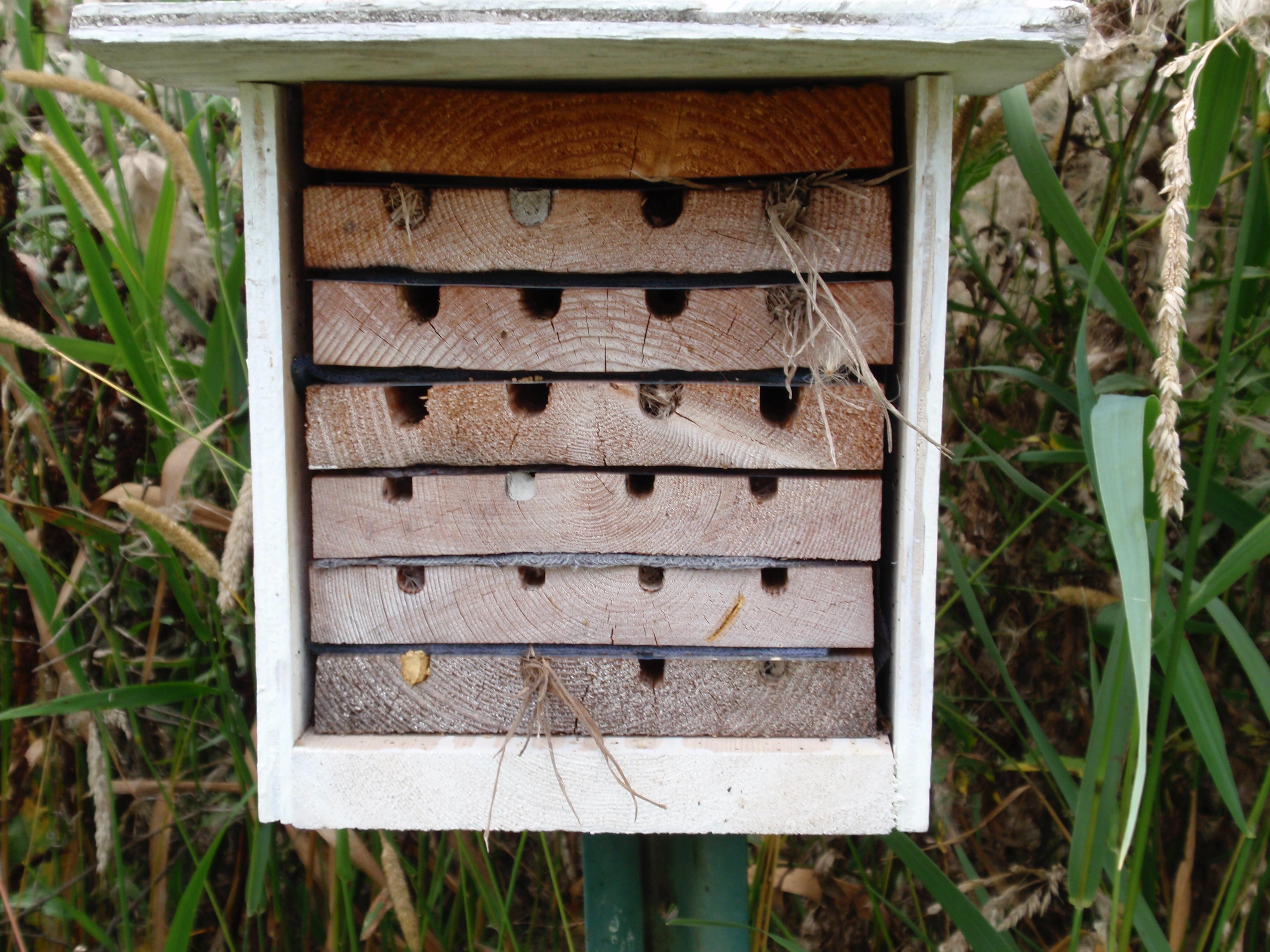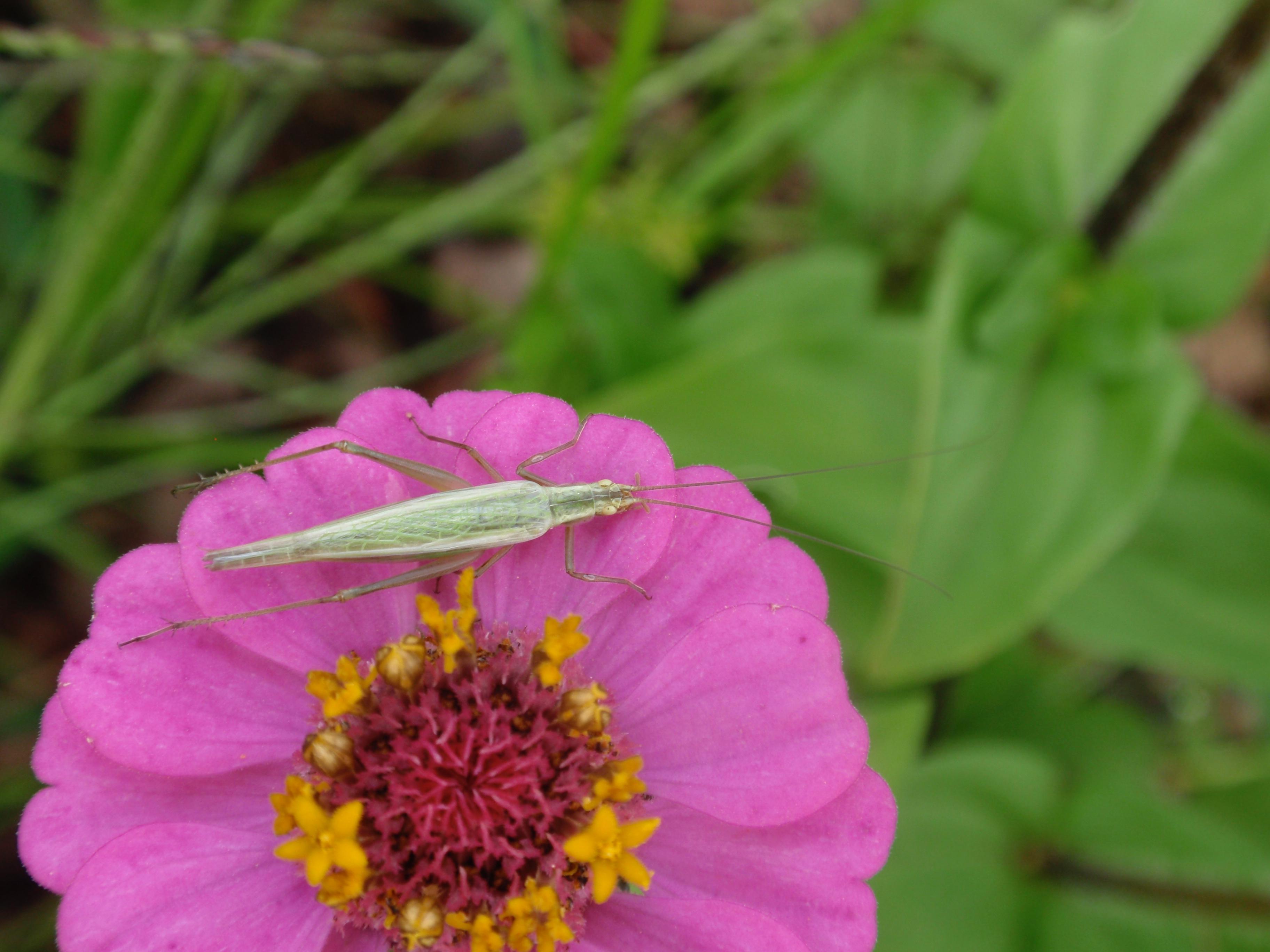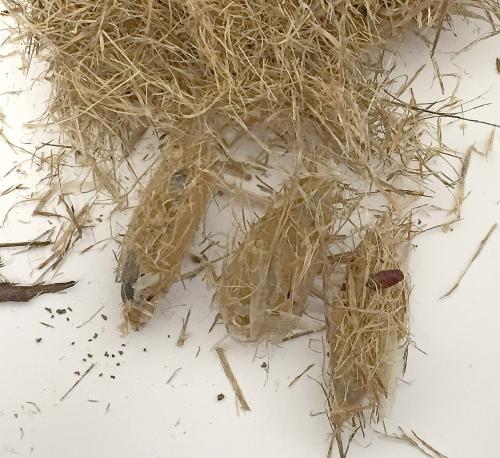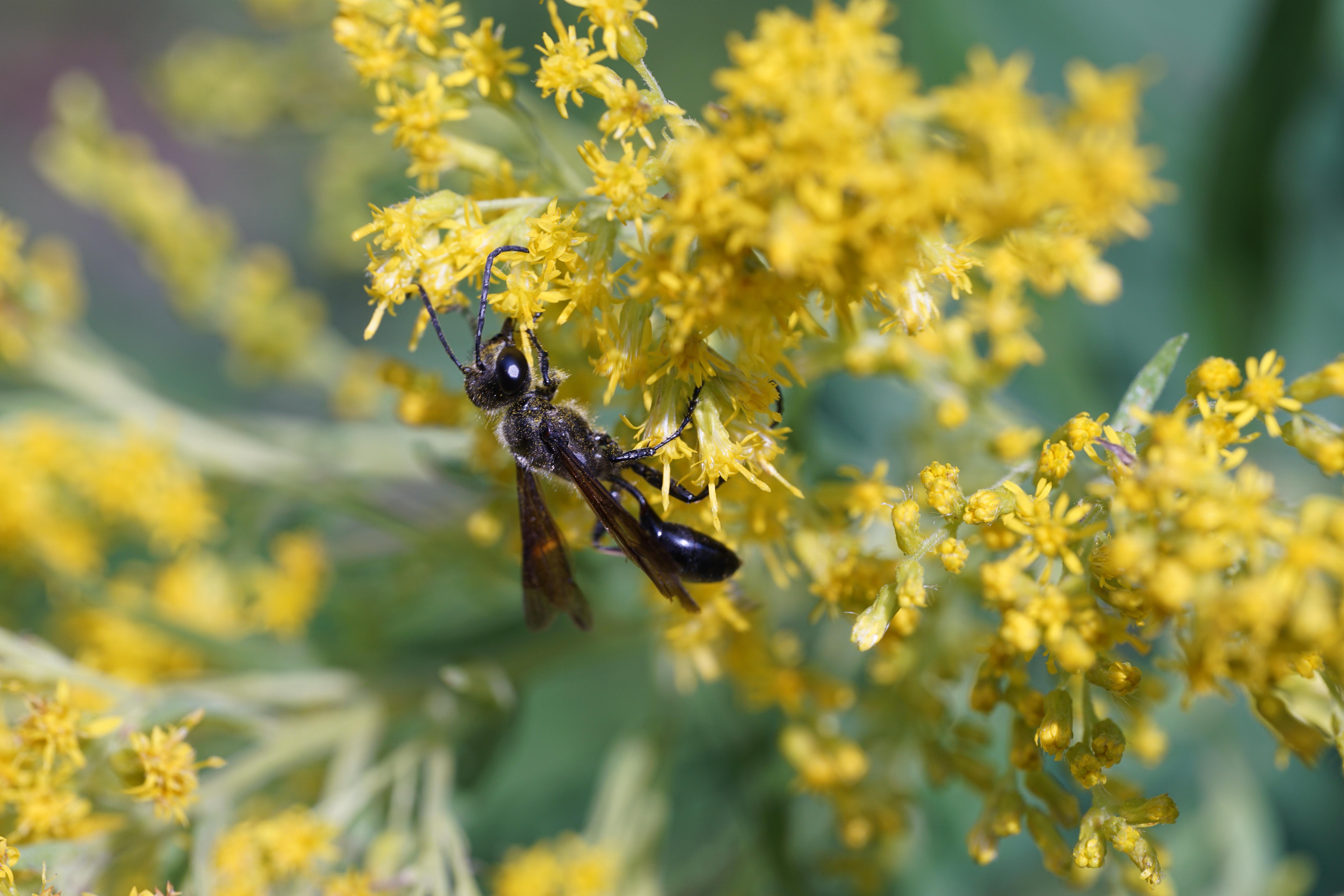The grass-carrying wasp: A solitary wasp that builds an unusual nest
Grass-carrying wasps build their distinctive nests in the tracks of storm windows as well as abandoned insect galleries and hollow plant stems.

As the interest in preserving pollinators continues to grow, it is helpful to find out more about the variety of native wasps and bees that can be found in our own backyards. You may encounter a grass-carrying wasp in a bee hotel if you have created one with a variety of different-sized tubes. In tubes occupied by grass wasps, you will likely find blades of grass sticking out of the tube.

Unlike some other solitary wasps, grass-carrying wasps prefer to lay their eggs in nests made in cavities above ground. In nature, the females of these solitary wasps occupy hollow plant stems or abandoned galleries of other species. In built environments, grass-carrying wasps will choose a variety of artificial cavities, as long as the size and shape are right. For example, the tracks of storm window frames and other cracks and crevices on the exterior of structures represent perfectly suitable locations for grass-carrying wasp nests.
To construct these nests, the female wasps carry blades of grass to the chosen cavity. There, brood cells are prepared with a lining of grass and provisioned with paralyzed tree crickets for the wasp larvae to feed on. The female wasp seeks out the tree crickets (subfamily Oecanthinae) in hidden locations and uses her stinger to paralyze them before carrying them back to the nest. The paralytic agent in the wasp venom keeps the crickets alive and preserved until the wasp’s eggs hatch and the larvae begin feeding. Once the larvae have completed their development, they create papery cocoons and transform into pupae where they wait out the winter before emerging as adult wasps the following spring.


Grass-carrying wasps are native to North America. They belong to the family of thread-waisted wasps (Sphecidae) and are in the genus Isodontia. The adults are about 3/4 of an inch long and shiny black. They don’t sting anyone other than their prey and are not aggressive unless you try to handle them. Most of their adult life is spent visiting flowers and sipping nectar, except when the females are busy building and provisioning nests.
Native plants they are attracted to include goldenrods (Solidago spp.), rattlesnake master (Eryngium yuccifolium), mountain mint (Pycanthemum spp.) and boneset (Eupatorium perfoliatum), among others.
For more information about these and other beneficial insects from Michigan State University Extension, visit our Michigan Pollinator Initiative and Gardening in Michigan websites.




 Print
Print Email
Email